Capybara vs. Nutria: What’s the Difference Between These Giant Rodents?
Capybara and nutria are giant rodents commonly found in South America. While they may look similar at first glance, some key differences between these animals make them distinct.
Here’re the differences between capybara vs. nutria. Capybaras are the largest rodents in the world, native to South America, and known for their semi-aquatic lifestyle. On the other hand, nutrias are smaller rodents found in North and South America and are often considered invasive.
Read on to discover the unique physical traits and behavioral patterns of capybara and nutria and their distinct habitat preferences.
Scientific Classifications of Capybara vs. Nutria
Here are the different scientific classifications of these two rodents.
Scientific Classifications of Capybara
Capybaras belong to the family Caviidae, which includes several other species of rodents, such as guinea pigs and cavies. The scientific name for the capybara is Hydrochoerus hydrochaeris.
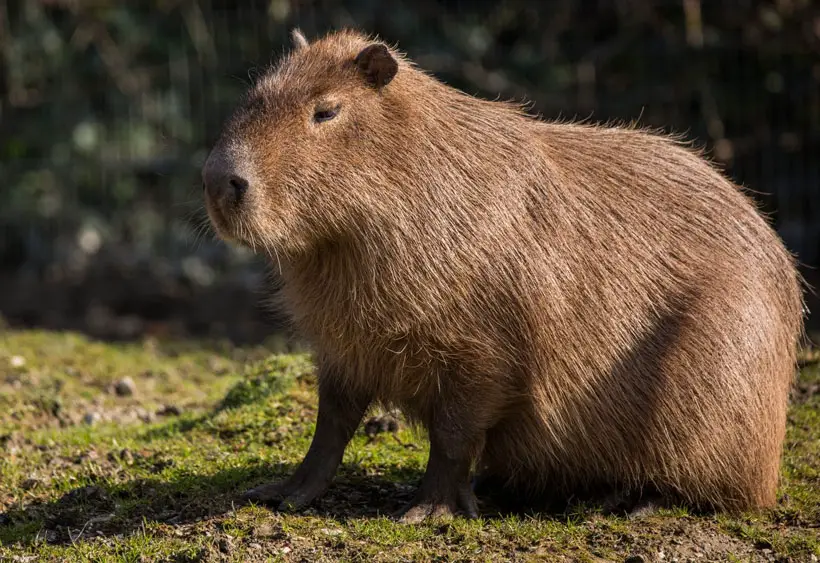
Scientific Classifications of Nutria
Nutrias belong to the family Myocastoridae, which includes only one species: Myocastor coypus. Nutrias, also known as coypu, are sometimes mistakenly referred to as “beavers” due to their physical resemblance.
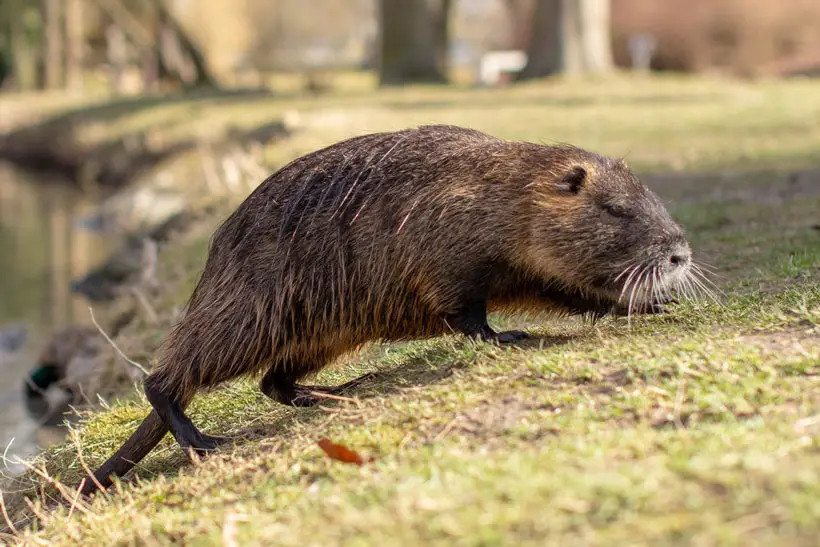
Overview of Key Differences Between Capybara vs. Nutria
As much as these rodents have a lot of similarities, they also have several physical, behavioral, and habitat differences. Here is a quick overview in the following table with their key differences.
| Characteristics | Capybara | Nutria |
|---|---|---|
| Size | Up to 140 pounds and 4 feet in length | 35-37 pounds and 2-3 feet in length |
| Fur color | Tan | Dark brown with distinctive orange incisors |
| Tail type | No tail | Long, cylindrical, and scaly tail |
| Feet | Webbed front and hind feet | Partially webbed hind feet |
| Body shape | Stocky with short legs and a large head | Elongated body with long legs and a smaller head |
| Social behavior | Form large herds, communicate with unique sounds and grunts | Live in groups, communicate with various cries and grunts |
| Burrowing behavior | Do not dig burrows | Dig complex tunnels and passages |
| Activity Pattern | Active during the day | Nocturnal, most active at night |
| Diet | Herbivorous, mainly eat grasses and aquatic plants | Herbivorous, mainly eat roots and aquatic vegetation |
| Habitat and Range | Live near water in South America, except Chile | Near freshwater sources in North and South America |
| Mating Habit and Ritual | Polygamous and promiscuous | Monogamous and faithful |
| Mating Season | November and April | December and June |
| Reproduction and lifespan | Give birth to litters of 1-8 babies and live up to 8-10 years | Give birth to litters of 1-13 babies and live up to 12 years |
1. Capybara vs. Nutria: Physical Differences
Capybara and nutria have several physical differences. Here is a table showing the physical differences between capybaras and nutria:
Size
Capybaras are the largest rodents in the world, and they can grow up to 140 pounds and reach a length of 4 feet.
In contrast, nutrias are much smaller, weighing 235-37 pounds and measuring only 2-3 feet long.
This significant difference in size is one of the most apparent physical characteristics that can help distinguish the two species.
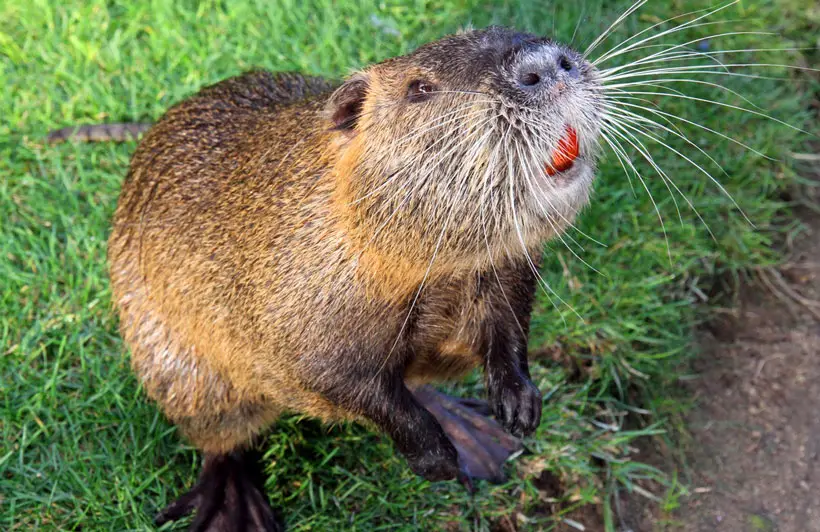
Fur Color
Another distinguishing physical characteristic between capybaras and nutrias is their fur color. Capybaras have tan or brown fur that helps them blend into their environment, making them less visible to predators.
On the other hand, nutrias have dark brown fur with distinctive orange incisors that set them apart from other rodents.
Tail Type
Capybaras have a unique tail structure, technically not a tail but a stubby protrusion at the end of their body. In contrast, nutrias have long, cylindrical, and scaly tails that are vital tools in their aquatic environment.
The nutria’s tail helps it move swiftly through water and dive for food, making it a highly efficient swimmer.
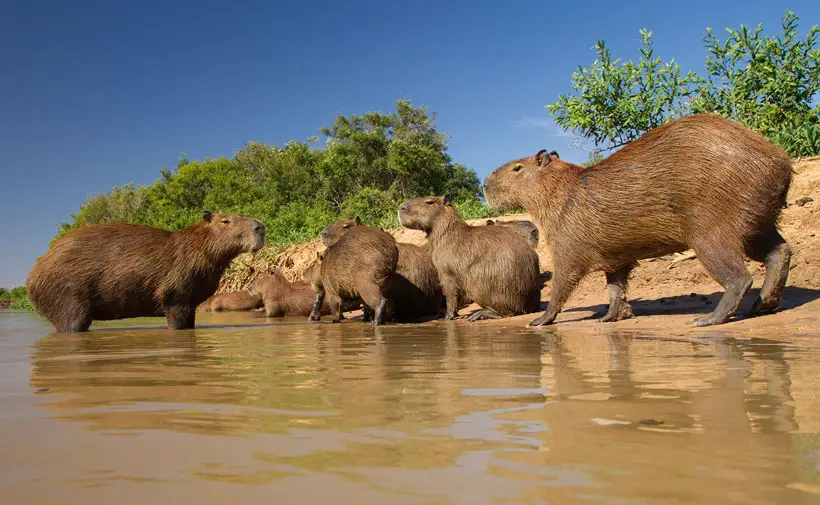
Feet
The feet of capybaras and nutrias are another physical characteristic that sets them apart.
Capybaras have webbed front and hind feet, which allow them to move quickly through the water and aid in their swimming abilities.
In contrast, nutrias have partially webbed hind feet that help them move in the water, although not as efficiently as capybaras.
Body Shape
Capybaras have stocky bodies with short legs and a large head, making them appear more substantial than they are. In contrast, nutrias have elongated bodies with long legs and smaller heads, which makes them appear more slender than capybaras.
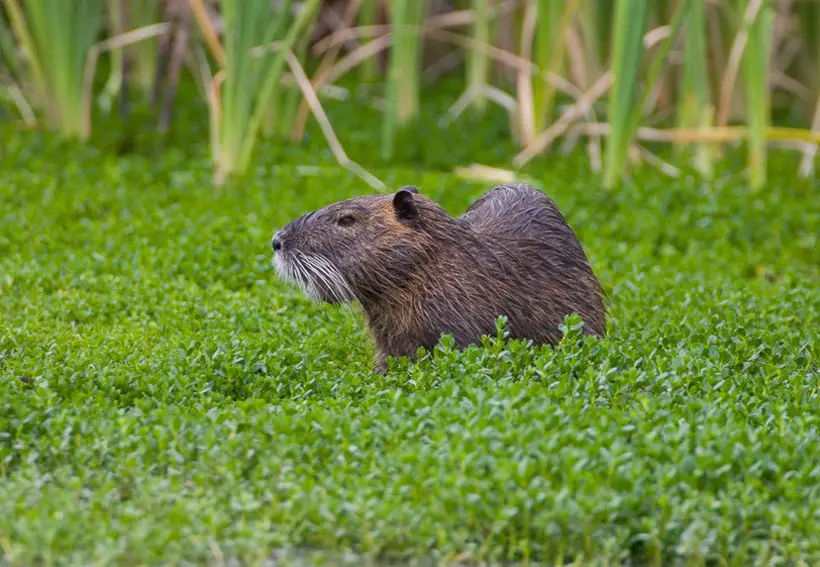
Teeth
Capybaras and nutrias have unique teeth that differ in structure and function. Capybaras have large, ever-growing incisors to graze on grass and other vegetation.
Nutrias have distinctive orange incisors, which are hard enough to chew through tough plant matter, bark, and even some materials used in human construction.
Ears and Eyes
Capybaras have small, rounded ears and eyes set close together, giving them a wide-angle view of their surroundings.
In contrast, nutrias have larger, more prominent ears and eyes set farther apart, allowing them to focus on distant objects and movement.
Here is a video to help you understand more about the physical difference between these rodents.
2. Behavioral Differences Between Capybaras and Nutrias
Capybaras and nutrias are social creatures but differ in behavior and habits. Here are some key differences between the two species:
Social Behavior
Both capybaras and nutrias are known for their social behavior, but the size of their herds varies. Capybaras congregate in large groups, particularly in grassy regions, where they feel more comfortable.
In contrast, nutrias also form herds but tend to have smaller group sizes than capybaras. Both animals use a range of unique sounds and grunts to communicate with each other, although the types of sounds they make differ.
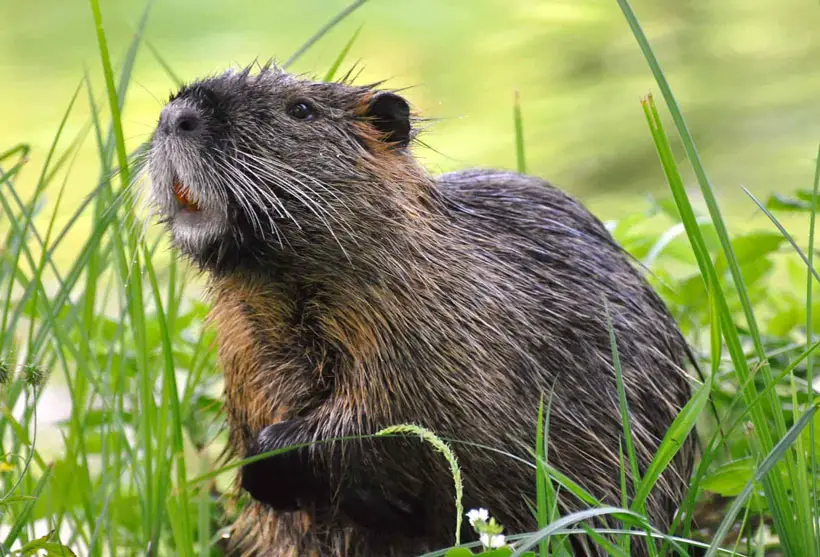
Capybaras are known to make a variety of vocalizations, including whistles, barks, grunts, and clicks. These sounds are used for various purposes, such as warning of danger, expressing aggression, and communicating with other group members.
Nutrias also make a variety of sounds, including mooing and grunting. These sounds are used for communication and can convey various emotions and intentions.
Activity Patterns
Capybaras and nutrias have different activity patterns. Nutrias are primarily nocturnal, meaning they are most active at night. They doze during the day and are most active in the early morning and late evening.
Conversely, capybaras are diurnal, meaning they are active during the day and sleep at night. They like to soak up the sun and are more active in the mornings and afternoons.
Burrowing and Tunneling
Nutrias are skilled at digging complex burrows and tunnels, which they use for shelter, nesting, and protection.
On the other hand, capybaras do not burrow or tunnel but may take shelter in hollow logs or under vegetation.
Food Preferences
Capybaras are herbivores that primarily feed on grasses, aquatic plants, and fruits. They are known to be picky eaters and will often forage for their favorite foods.
Alternatively, even though nutrias are primarily herbivores, they feed on various foods, including plants, insects, small fish, and shellfish.
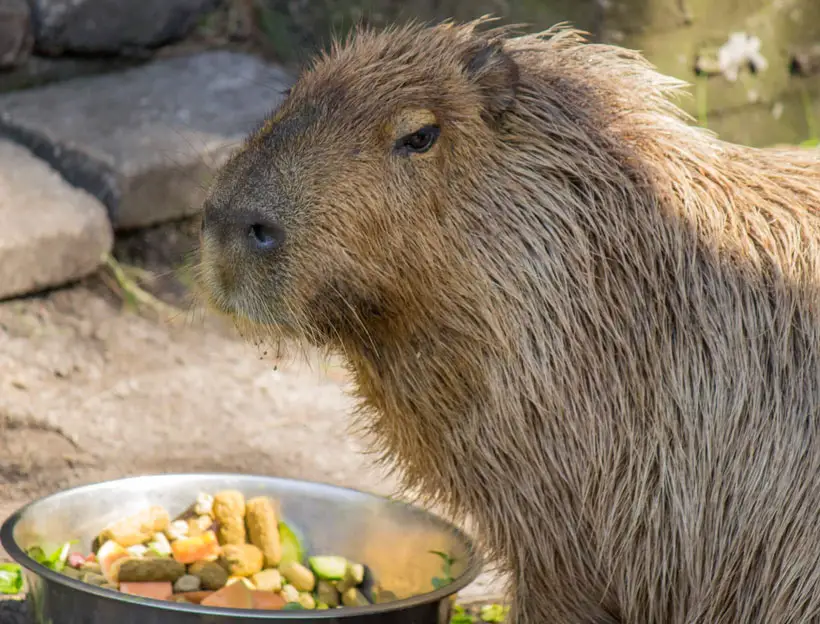
Predator Defense
Both capybaras and nutrias are preyed upon by predators, including jaguars, anacondas, caimans, and eagles. However, they use different tactics to avoid predators.
Capybaras rely on their excellent hearing and sense of smell to detect danger and have been known to quickly flee into the water when threatened. On the other hand, Nutrias are excellent swimmers and can stay submerged underwater for up to five minutes to escape predators.
3. Capybara vs. Nutria: Habitat and Range
Capybaras and nutrias have different habitat preferences based on their distinct physical and behavioral characteristics.
- Capybaras: Capybaras are primarily found in South America, specifically in Venezuela, Colombia, and Brazil’s grassy plains, wetlands, and forests. They enjoy living near bodies of water such as rivers, streams, and lakes, where they can swim and cool off during hot days.
They also like to be near areas with tall grasses and vegetation where they can hide from predators and find food. Capybaras are adaptable to living in different habitats as long as water is available.
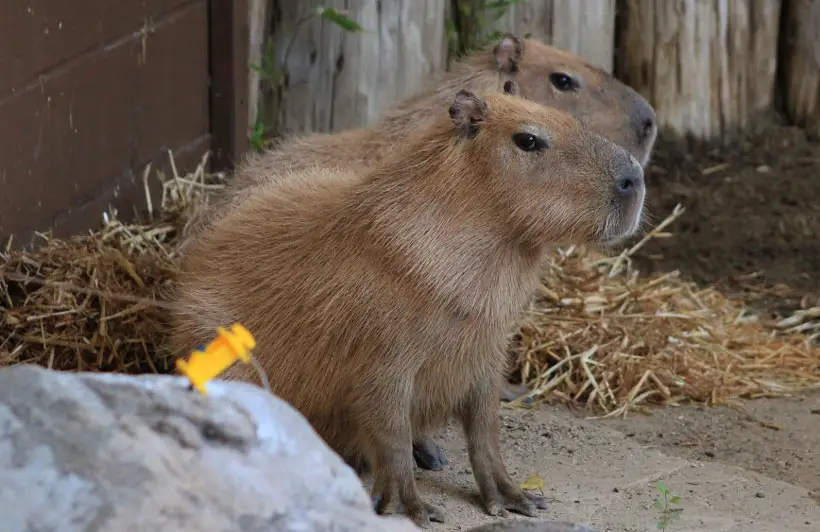
Capybaras do not create burrows or dens like nutrias. Instead, they prefer to use already existing burrows or cavities made by other animals or use the shade provided by nearby trees.
- Nutrias: Nutrias prefer to live near freshwater bodies such as rivers, streams, ponds, and swamps. They are native to South America but have been introduced to North America, Europe, and Asia.
They are known to be excellent swimmers and can hold their breath underwater for up to five minutes. Nutrias like to build their dens in rivers and streams’ banks and create burrows with underwater entrances. This provides them with a quick escape from predators and helps them hunt for food.
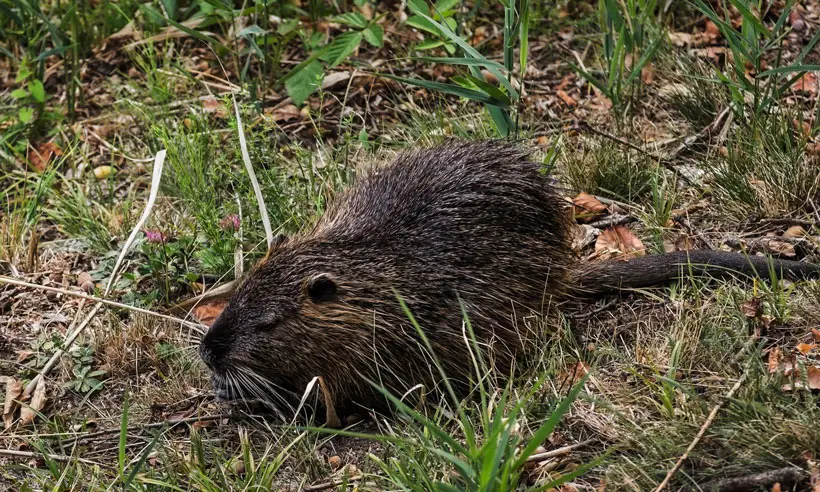
Nutrias build their dens on the banks of rivers and streams and create burrows with underwater entrances. They also create feeding platforms to enjoy their vegetation while they swim in the water.
4. Mating and Breeding Behavior
Mating and breeding behavior are important aspects of the life cycles of both capybaras and nutrias. Here is a closer look at the differences between these two species regarding mating habits, seasons, reproduction, and lifespan.
Mating Habit and Ritual
Capybaras are highly social animals and typically live in groups of up to 20 individuals. During the mating season, males engage in elaborate courtship displays to attract females.
These displays may involve chasing, biting, and nipping at the female, as well as vocalizations and scent marking. Once a male successfully attracts a female, the pair will mate multiple times throughout the breeding season.
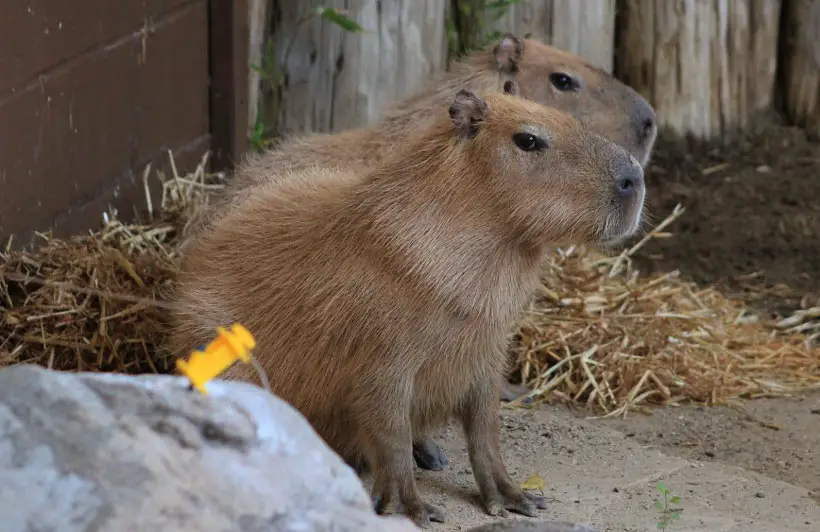
Nutrias, on the other hand, are generally more solitary and territorial than capybaras.
Mating rituals involve males and females marking their territory with urine and feces and scent marking with their anal glands. Females typically only mate with a single male, and the pair will mate multiple times throughout the breeding season.
Mating Season
Capybaras mate between November and April in South America, although the exact timing can vary depending on the location and climate. Nutrias also have a breeding season that typically occurs between December and June, with the season’s peak in March and April.
Reproduction and Lifespan
Capybaras are highly prolific breeders and can reproduce throughout the year, although most mating occurs during the breeding season. Females give birth to litters of 1-8 young after a gestation period of around 150 days.
Capybara offspring are weaned at around 3 months and reach sexual maturity at around 1 year. In the wild, capybaras have an average lifespan of around 8-10 years.
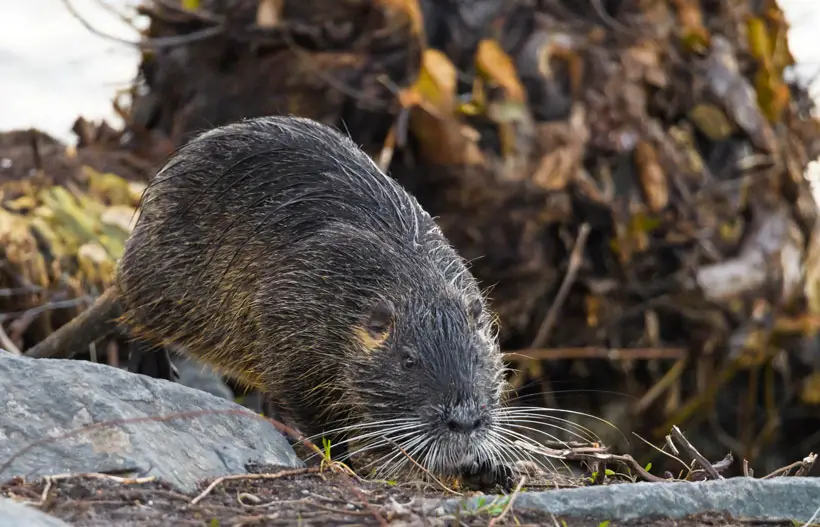
Nutrias have a similar gestation period to capybaras, with females giving birth to litters of 1-13 young. The young are also precocial and can swim almost immediately after birth.
Nutria offspring are weaned at around 2-3 months and reach sexual maturity at around 6 months. In the wild, nutrias have an average lifespan of around 6-8 years.
If you’re interested in learning more about capybara care, you might also find our article on capybara care helpful. It provides valuable information on how to properly care for these fascinating animals, including their diet, habitat, social needs, and general well-being. Additionally, if you want to understand why capybaras are known for being so friendly, you can check out our article on why capybaras are so friendly, which explores their social nature and unique behaviors.FAQs
Here are a few more additional questions on these rodents you may be interested in.
Q1: Are capybaras and nutrias dangerous to humans?
A: While capybaras and nutrias are not typically aggressive towards humans, they can pose a danger if they feel threatened or cornered. Capybaras are known to defend their young aggressively, while nutrias have been known to bite humans who come too close.
Q2: Are capybaras and nutrias closely related?
Both capybaras and nutrias are members of the order Rodentia, which means they are part of the same larger group of animals. However, they are not closely related species and belong to different families within the order.
Q3: Can capybaras and nutrias be kept as pets?
While keeping capybaras and nutrias as pets in some countries is legal, it is not recommended. They are wild animals that require specialized care and habitat conditions.
Conclusion
While capybaras and nutrias share some similarities, they differ vastly in their physical characteristics, behavior, and habitat preferences. The capybara is much larger and heavier than the nutria, and its body shape, feet, and tail are also quite different.
It’s important to understand the differences between these two rodents. Especially if you’re trying to choose which one might better fit a particular habitat. Learning more about capybara vs nutria makes it clear that each has its own unique characteristics and quirks.




